Queer Places:
Académie Julian, Passage des Panoramas, 75002 Paris
3 Place du Palais Bourbon, 75007 Paris, France
Villa Dell'Ombrellino, 50124 Firenze FI, Italia
 Marie Joseph Paul Jean de Gaigneron-Morin , born on February 22 , 1890 in
Paris and died in the same city on January 30 , 1976, was a French painter .
In 1919 he had a relationship with
Harold Nicolson,
and he is the inspiration for the Marquis de Chaumont in Some
People: the snobbish Marquis de Chaumont fritters away his talent on the altar
of social success. Jean de Gaigneron is remembered in the diaries of
Ned Rorem.
Marie Joseph Paul Jean de Gaigneron-Morin , born on February 22 , 1890 in
Paris and died in the same city on January 30 , 1976, was a French painter .
In 1919 he had a relationship with
Harold Nicolson,
and he is the inspiration for the Marquis de Chaumont in Some
People: the snobbish Marquis de Chaumont fritters away his talent on the altar
of social success. Jean de Gaigneron is remembered in the diaries of
Ned Rorem.
Jean de Gaigneron, the youngest son of the second marriage of Viscount
Marie Paul Philippe Maxime de Gaigneron-Morin with Agnès de Gontaut-Biron
(daughter of Élie de Gontaut-Biron ) was born in Paris
[ 1 ] on February 22, 1890.
In 1908, he was a pupil at the Académie Julian in Paris
[ 2 ] . In 1910, he became a pupil of Othon Friesz .
He performed his military service from October 10, 1911 to November 8,
1913, and was released with the rank of sergeant. Recalled on August 2, 1914, he
was demobilized on August 2, 1919, having been injured twice, the second
time in 1918 in Morocco. During this Moroccan stay, he first exhibited at the
Rabat fair in November 1917 ( "His portraits and his landscapes are of a
pretty paste" one observes there)
[ 3 ] , then the following year at the Excelsior hotel in
Casablanca as part of the general agricultural competition in Morocco
[ 4 ] ,
[ 5 ] .

Self-portrait
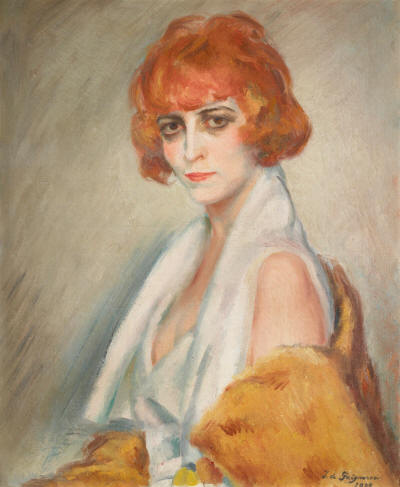
La Marchesa Casati, by Jean de Gaigneron
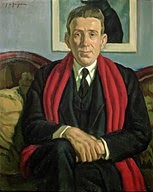
Francis Poulenc by Jean de Gaigneron

Nelly de Contades by Jean de Gaigneron, Nelly de CONTADES (nèe de
Benardaky) was the sister of Marie de Benardaky (1874-1949), the first love of
Marcel Proust. Her sister (Marie) was first married to Prince Michael
Radzivill.
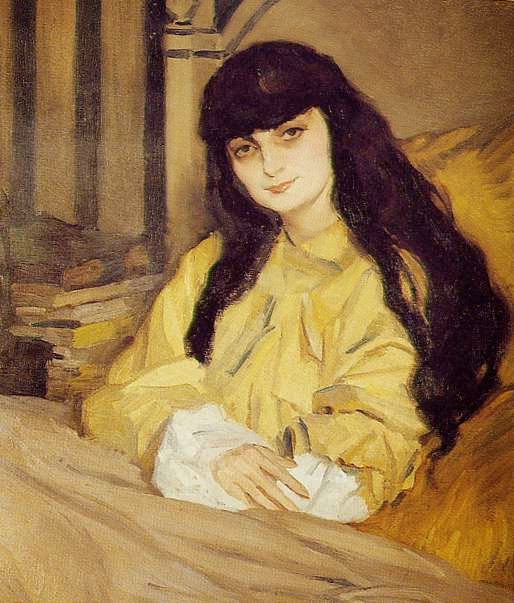
Anna de Noailles, by Jean de Gaigneron, 1910

Jean Giraudoux by Jean de Gaigneron

Speed Lamkin by Jean de Gaigneron
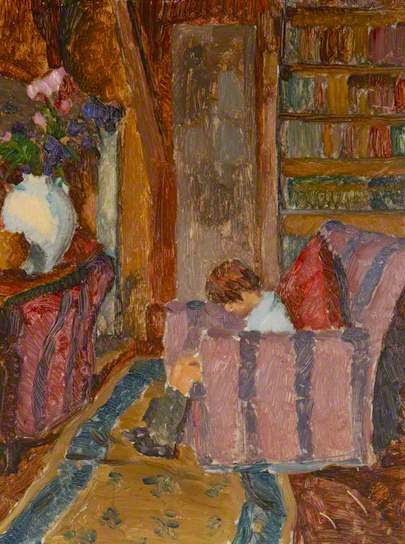
Lionel Benedict Nicolson by Jean de Gaigneron
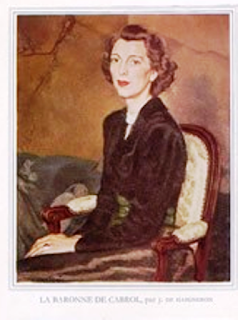
La Baronne de Cabrol by Jean de Gaigneron

Comtesse Thérése d'Hinnisdal by Jean de Gaigneron

Arthur Mugnier, by Jean de Gaigneron

Vicomtesse de Gaigneron, by Jean de Gaigneron
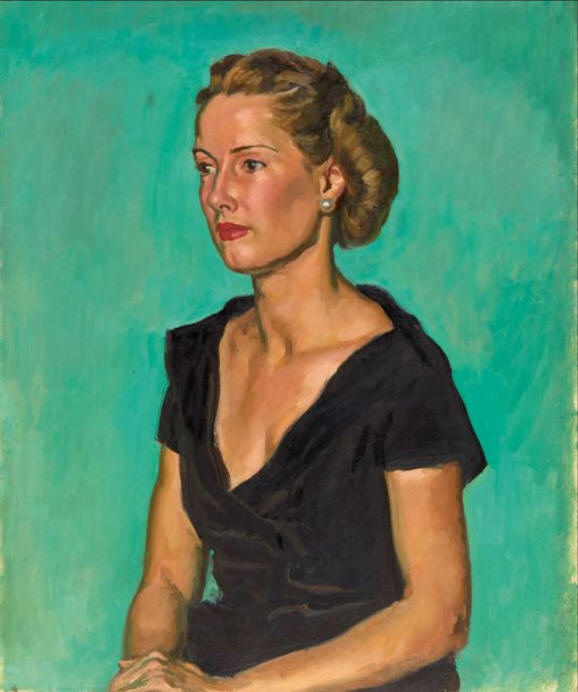
Marquise de Lévis-Mirepoix, by Jean de Gaigneron
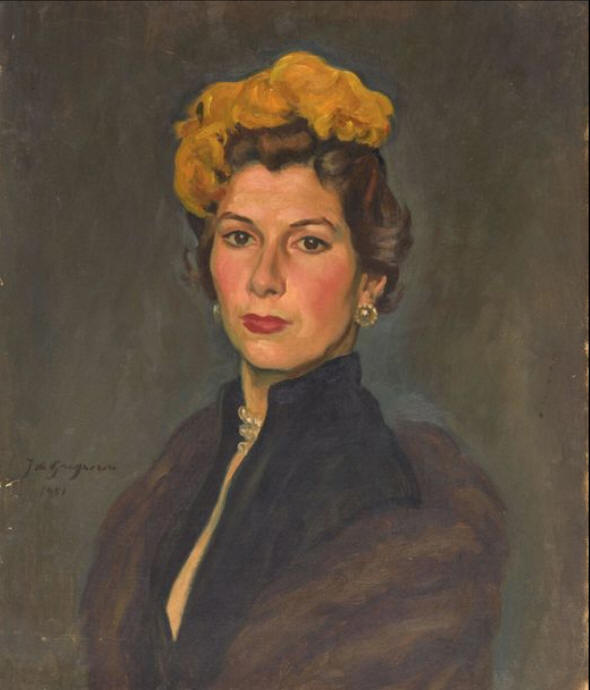
Comtesse Floria d'Huart, by Jean de Gaigneron, 1951
.JPG)
Villa dell'Ombrellino
Back in France, he participated for the first time in the Salon d'Automne
in 1919 - "he brought back from Morocco expressive compositions, carried out
in a sober manner, with a beautiful outfit" remarked Émile Sedeyn
[ 6 ] - and resumes painting by receiving advice from
Jacques-Émile Blanche , developing his taste for portraiture and engaging
with him a long and deep friendship: the
Custodia Foundation retains the letters written by Jacques-Émile Blanche
to Jean de Gaigneron whose dates range from September 1915 to February 1942, as
well as a photo of the portrait he painted
[ 7 ] .
During the
interwar period Jean de Gaigneron was part of Parisian intellectual
society, as his presence will state in the receptions of the Rapprochement
intellectuel chaired by
François-Charles d'Harcourt
[ 8 ] . He was a friend in particular of
Marcel Proust (
André Maurois
[ 9 ] , Guillaume Perrier
[ 10 ] and
Jean-Yves Tadié , among others, evoke his fervent letter to Jean de
Gaigneron about the word "cathedral" used by the artist to define In search
of lost time
[ 11 ]), of
François Mauriac
[ 12 ] (the Portrait of François Mauriac by Jean de Gaigneron
will remain in the writer's collection until the latter makes the donation to
the
Jacques-Doucet literary library
[ 13 ] ), of
Paul Morand
[ 14 ] and of Father
Arthur Mugnier, whose best portrait , according to
Ghislain de Diesbach , is that of Jean de Gaigneron
[ 15 ] . In April 1919, he met Sir
Harold Nicolson and his wife
Vita Sackville-West
whom he introduced to Marcel Proust and Jean
Cocteau.
From 1928 to 1929, Jean de Gaigneron collaborated in
Louise Weiss's review
L'Europe nouvelle
[ 16 ] in which he wrote articles on Parisian exhibitions,
commenting in particular on the works of
Maurice de Vlaminck ,
Hermine David ,
Henri Matisse or Othon Friesz .
During 1930, during a stay in Italy, he resided in
Florence with
Violet Trefusis , near Vita Sackville-West, at the
villa l'Ombrellino[ 17 ] .
In 1932, he was appointed knight of the
Legion of Honor
[ 18 ] .
Mobilized in 1939 at the outbreak of the
Second World War , he captained the
248 th
Infantry Regiment and was taken prisoner at
Saint-Lô (
Frontstalag 131) before being deported to Germany
[ 19 ] and released after the armistice 1940.
He died in Paris on January 30, 1976. The sale of its collections and part of its
workshop tokk place on April 8 and 9, 1976[
20 ] , At the
Hôtel Drouot in Paris. Another sale from his workshop took place on January 23,
2019[
21 ] .
His nephew
Jean-René de Gaigneron also being a painter, there is confusion over the
attribution of certain works.
My published books:


BACK TO HOME PAGE

- https://fr.wikipedia.org/wiki/Jean_de_Gaigneron
-
https://www.nytimes.com/1982/12/29/books/books-of-the-times-128259.html
 Marie Joseph Paul Jean de Gaigneron-Morin , born on February 22 , 1890 in
Paris and died in the same city on January 30 , 1976, was a French painter .
In 1919 he had a relationship with
Harold Nicolson,
and he is the inspiration for the Marquis de Chaumont in Some
People: the snobbish Marquis de Chaumont fritters away his talent on the altar
of social success. Jean de Gaigneron is remembered in the diaries of
Ned Rorem.
Marie Joseph Paul Jean de Gaigneron-Morin , born on February 22 , 1890 in
Paris and died in the same city on January 30 , 1976, was a French painter .
In 1919 he had a relationship with
Harold Nicolson,
and he is the inspiration for the Marquis de Chaumont in Some
People: the snobbish Marquis de Chaumont fritters away his talent on the altar
of social success. Jean de Gaigneron is remembered in the diaries of
Ned Rorem.












.JPG)

